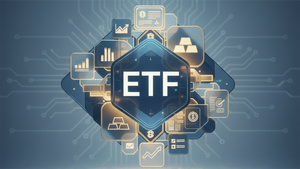
The price-to-earnings ratio, or P/E ratio, is one of the most commonly used metrics in fundamental stock analysis. The division of share price by earnings per share (typically over the last 12 months or an estimate of the next 12 months), it's a simple tool for understanding how a company is valued in the market. Since P/E ratios can be calculated for any publicly traded stock (or index), it also provides an apples-to-apples comparison of companies that have different market caps and even operate in different industries.
At the end of the day, a P/E multiple tells us how much the market is willing to pay for every dollar of corporate profits. From there, investors can assess whether a stock is undervalued or overvalued relative to its peer group or own history.
With major U.S. stock indices within striking distance of their all-time highs, valuations are naturally elevated. The run-up in technology names has the Nasdaq-100’s trailing P/E ratio at 29x compared to 26x a year ago.
And despite its 2023 underperformance, the Dow Jones Industrial Average is similarly stretched. It's trading at 22x earnings versus 19x a year ago.
Whether or not the Dow’s valuation is due for a correction toward its historical mean is debatable. What’s certain is that there’s a wide disparity between the P/E ratios of its individual components.
Salesforce (552x), IBM (60x) and Walt Disney (40x) are presently the most expensive stocks in the Dow. At the other end of the spectrum are these two blue-chip bargains.
Are Chevron Shares Too Cheap?
One of the world’s five ‘super major’ oil & gas producers, Chevron Corporation (NYSE: CVX) is super cheap at 8x trailing earnings. From 2011 to 2022, the DJIA’s only energy sector constituent traded in an average annual P/E range of 13x to 34x. Over the last five years, the stock has garnered an average P/E ratio of around 22x.
The valuation is as low as it is primarily because of falling oil prices. Since Chevron shares hit a record peak of $189.68 In November 2022, roughly $10 has been trimmed from WTI crude prices. However, as Chevron bulls will point out, the pace of the share price decline has outpaced that of oil. Since November 16th, Chevron shares are down 16.5%, while oil is down 11.9%.
This partly relates to expectations for further crude downside and the anticipated impact on Chevron’s profits. Lingering recession concerns in the U.S. and Europe, along with an economic slowdown in China, have kept downward pressure on oil prices. Chevron and WTI crude don’t trade in perfect lockstep fashion, but their high correlation suggests Chevron’s stock price and oil will eventually meet halfway.
What the market is also undervaluing is Chevron’s higher margin refining business which last quarter helped lower oil and natural gas pricing. This drove a solid EPS beat in Q1 and has the potential to do the same in subsequent quarters.
Bottom line: energy prices ride the economic cycles as much as any other asset class. With an upswing just a matter of time, getting Chevron on the dip at 8x earnings should be a long-term win.
What Is the Least Expensive Stock in the Dow?
At approximately 7x trailing earnings, Verizon Communications Inc. (NYSE: VZ) is currently the Dow 30’s least expensive stock. Like Chevron, the telecom services leader’s depressed valuation is largely a reflection of the macroeconomic outlook.
Uncertainty around business and residential demand for 5G networking caused management to reiterate its expectations for 2.5% to 4.5% wireless revenue growth in 2023 during its April 25th earnings call. Despite a slight Q1 earnings beat, Verizon shares have since trended lower, last week reaching a fresh 52-week low.
At the midpoint, management’s full-year EPS guidance imputes a 7.4x forward P/E ratio. Verizon’s five-year average P/E is 11.3x, meaning its stock is trading at a 35% discount from its historical norm.
Granted, this ties into the expectation that the company won’t return to bottom-line growth until at least 2024. Meanwhile, rival T-Mobile U.S. is expected to deliver strong earnings growth in 2023 and therefore carries an 18x forward P/E.
Yet, for long-term investors looking for exposure to the growth associated with the global 5G buildout, Verizon certainly fits the bill. The technology’s potential in new markets like mobile edge computing and the Internet-of-Things (IoT) is still unknown and may be more reason to sit on a Verizon turnaround.
The Dow’s lowest P/E and highest yield (7.5%) both belong to the same company. ‘Can you hear me now?’ Verizon is getting connected to deep value.





